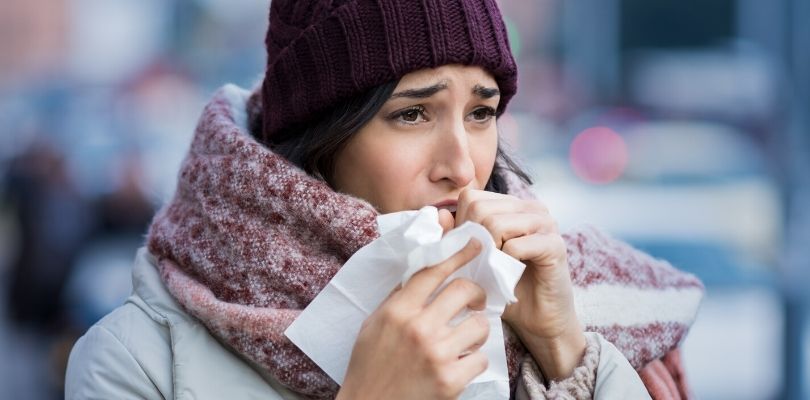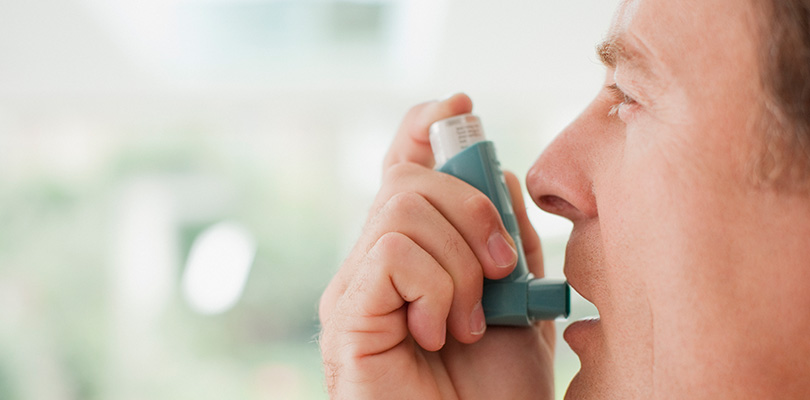The Connection Between Cold Weather and COPD
Chronic obstructive pulmonary disease (COPD) causes a variety of symptoms, including wheezing, shortness of breathing and chest tightness. Various factors can affect COPD symptoms and an exacerbation of the disease. For example, cold weather can make symptoms worse. Understanding how cold weather may affect COPD and what you can do, may help you reduce symptoms.
How Does Cold Weather Affect COPD?
How low the temperature must drop before it affects someone with COPD varies. Typically, temperatures around or below freezing can make breathing harder for people with COPD.
According to the American Lung Association, the cold weather can affect people with COPD in a few different ways. It is not just the temperature of the air, it is also the humidity level. Cold air is also dry, which can make breathing more difficult and lead to the following:
Bronchospasm
Dry air can irritate sensitive airways leading to bronchospasm, which is narrowing of the muscles around the bronchi. Bronchospasm causes shortness of breath, wheezing and chest tightness.
Coughing
Cold, dry air that irritates the lungs can cause coughing. The cough may be dry in some cases. In other instances, cold air may lead to increased mucus production and a moist cough.
Fatigue
Difficulty breathing in cold weather can be tiring. It often leads to an increase in your work of breathing and causes fatigue. Plus, muscles that are tense and work harder require an increased amount of oxygen, which can result in lower blood oxygen levels.
Air Trapping
Since the cold air can lead to narrowing of the airways, it often causes shortness of breath, resulting in increased respiration and shallow breathing. When you have COPD, you might be able to get air into the lungs, but it is challenging to get air out, which leads to air trapping. Breathing too fast, such as in cold weather, does not allow you the time to fully exhale, which leads to air trapping.
Increased Blood Pressure
When the temperatures drop, the blood vessels start to constrict or narrow. The narrowed vessels make the heart work harder to pump blood throughout the body. Your blood pressure increases to improve circulation.
Tips for Coping With COPD and Cold Weather
Although the cold air can be challenging for people with COPD, there are things you can do to deal with the dipping temps and control symptoms. Consider the following tips:
Cover Your Mouth and Nose With a Scarf
Warming the air before inhaling can help reduce irritation to the airways. During the cold winter months, wear a scarf over your nose and mouth and remember to inhale through your nose to humidify and warm the air before it gets into your lungs.
Small steps, reasonable expectations, and a healthy mindset are the keys to making New Year's resolutions for people with COPD.
Use Your Fast-Acting Inhaler
If you experience an increase in COPD symptoms, such as chest tightness and wheezing during the cold weather, use your fast-acting inhaler. Be sure to carry your inhaler with you, so you will have it handy. Fast-acting inhalers are bronchodilators that open the airways.
Avoid Exercising Outdoors
The cold weather is enough to cause breathing problems for people with lung disease. When you combine exercise in cold weather, it can lead to an increase in COPD symptoms. If you typically exercise outdoors, when the temperatures get colder, consider switching to an indoor workout.
Monitor Air Quality
Air pollution is not only an issue in the summer and spring. Poor air quality also occurs during the winter months, especially in cold climates, where there may be a lot of wood burning. You can check air quality daily through your local weather station website or at the Environmental Protection Agency website. On days when air quality is especially poor, try to limit time outdoors as much as possible.
Do not Use a Fireplace or Wood Burning Stove
If you have COPD or other lung diseases, you are more likely to be sensitive to smoke. Of course, you should avoid smoking or being around secondhand smoke, but cigarettes are not the only culprit. Smoke from fireplaces and wood burning stoves can also irritate the airways and increase symptoms of COPD. In addition to a sudden flare-up of symptoms, exposure to smoke can cause long-term consequences, such as a decrease in lung function. To stay warm during the cold months, use an electric heater instead of a fireplace.
Get Your Flu Shot
Cold temps usually mean it is cold and flu season. Although a flu shot does not protect you against the cold weather, it can decrease your risk of getting sick with influenza. The flu, which is most common during the winter months, can lead to complications. People with COPD are more likely to develop pneumonia when they contract the flu.
Avoid High Altitudes
If possible, avoid traveling to areas that are at high altitudes during the cold weather. High altitude can make breathing more difficult for people with lung diseases. When you combine high altitude with cold, dry air, it can mean trouble for people with COPD.







